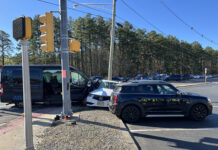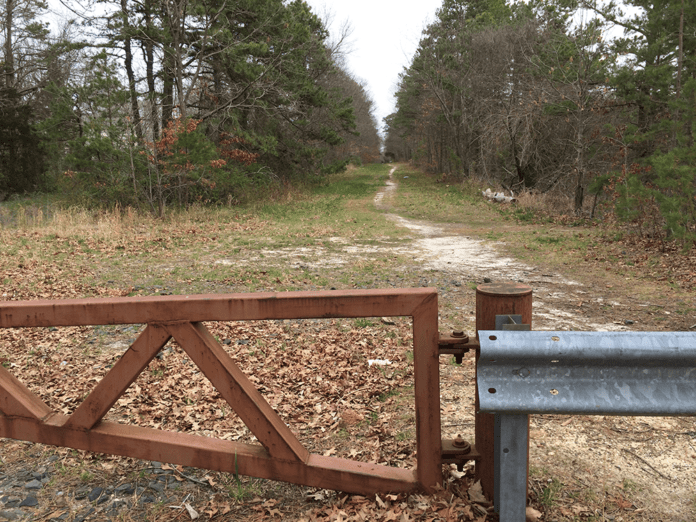
LACEY – Environmental groups are upset that an appellate court upheld the DEP’s decision to allow a road on the railroad right-of-way, alongside a walking and biking trail.
The New Jersey Department of Environmental Protection previously denied the town’s plan to build a roadway that comes north off of Lacey Road. The town applied again and the road was approved. This decision was appealed by environmental groups. The appellate division of the Supreme Court ultimately allowed the road.
The road will be built alongside a bicycle/walking path. This path will join the rail trail that snakes through several towns, and follows the general path of a long-defunct Central Jersey Railroad line.
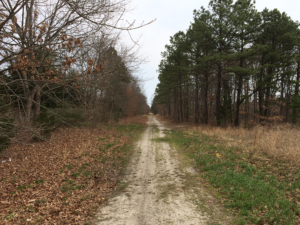
Environmental groups, headed up by the Lacey Rail Trail Environmental Committee, lamented that Lacey is the only part of the rail trail that will be marred by a roadway. They argue that the DEP denied the road twice in the past, and was not acting in good faith when they reversed their decision. Rather, they were acting based on political pressure.
“Our organization, the Lacey Rail Trail Environmental Committee (LRTEC), has advocated on behalf of the past, current and future users of this unique recreational rail-trail,” said Donna Bahrle, founder of the LRTEC. “Upon the advice of our attorney, we hope to continue to fight for the preservation of this open space for generations to come. Once it is paved over, it is gone forever.”
Municipal officials, on the other hand, were pleased by the decision.
“We were very satisfied and happy when the decision came out,” said Committeeman Gary Quinn. “We’re planning on getting started as soon as possible.”
The township will begin work on a portion of the road from Lacey Road to Sunrise Boulevard.
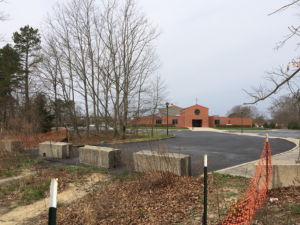
Money was put aside by Home Depot and Wal-Mart to pay for their portion of the roadwork. The money has been held and is ready to go, he said.
The county would participate with its portion of trail.
The township always argued that the road was needed for safety reasons, Quinn said. It would meet Lacey Road between the St. Pius X church and the Forked River School.
Currently, a police officer is at the church directing traffic on Sunday mornings as vehicles pour out onto the four lanes of Lacey Road. Instead, church traffic would be routed to this intersection, where a traffic light will be installed. The county has already run electricity to that spot for a future light.
The church and the school will be the only two properties allowed to have driveways onto the road, he said. No building permits will be issued on the road.
Residents of Sunrise Beach would come through the intersection in front of Home Depot and go through the parking lot there to an access road that would lead to that right-of-way. From there, they would bypass the Route 9/Lacey Road intersection on their way west to the Garden State Parkway or other areas.

Lacey has always wanted to have the road and walkway. Their layout has not changed from the beginning, Quinn said.
It will also be good to not take any more taxpayer money in litigating the issue, he said, noting that it would have been better to do it two or three years earlier when the market was not as strong and it could have been less expensive.
Despite the controversy that has existed in Lacey for more than a decade, the county has not taken an official side, Freeholder John Bartlett said.
“Lacey Township bought the right-of-way years ago with the intention of building a road. They were nice enough to grant us land for a trail,” he said.
Across the county, much of the project has already been completed, he said. Sections are done as grants become available, so there really hasn’t been a deadline about it. The Lacey portion and another in Berkeley are the only large parts that are incomplete. The Lacey part was mired in litigation.
The Berkeley part is throughout the former pulverizing plant. The path through there has not yet been decided. It is an expansive property with a variety of scenic views, so there could be optional longer paths going through it, he said.
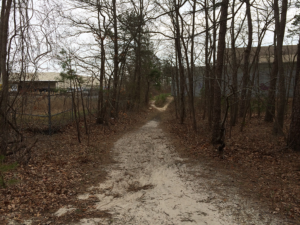
The new road would be designated as Railroad Avenue. It would be one lane each way, except at an intersection where a right-turn lane would be added. There would be a pedestrian and bike path, separate from the roadway by a two-foot landscaped buffer.
The DEP had a condition that no new curb cuts should be permitted, so there will be no additional development along the roadway.
Lacey acquired the 4.8-mile long and 50-foot wide portion of the right of way in 1993 through tax foreclosure. It had intended to construct a roadway back then. It was in its master plan for years. In 2004, it granted the county a 12-foot-wide easement along the western edge for a bike path.
The DEP had previously ruled that what little relief of Route 9 traffic this road would provide would not be enough.

According to the DEP’s decision, the DEP had approved the road in 2014. The environmental groups had to prove that this approval was done in a capricious or unreasonable nature. “We accord deference to a final agency action, and will not substitute our judgment for the expertise of an agency,” it read.
The court noted that there was no proof that the road would cause negative effects for any native plants and animals. Additionally, it stated that the property, a former rail line that is bordered by houses on the western side, was never open space. It also stated that the DEP has a right to change its decision when faced with new facts or a changed plan.
The appellants had argued that the area had been used as passive recreation for so many years that passive recreation had become its real use. The state found, instead, that it had always been intended as a road.
“We are very disappointed in the court’s decision. We feel that the NJDEP did not use their coastal policies to protect public open space in Lacey Township and conversely decided to give in to a local municipality’s development hungry interests and approve a needless roadway that impacts a special place in the community. The railroad right-of-way is unique and an irreplaceable natural landscape in the coastal region and should not be paved over,” said Helen Henderson of the American Littoral Society.
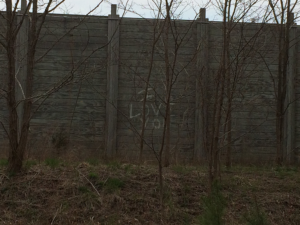
“We are disappointed that the court has ignored the fact that this area is environmentally sensitive, but it is hard to overcome the deference courts give to state agencies. We thought DEP acted in bad faith, violated the rules in place to approve this project, and therefore the court is wrong. The court has clearly ignored the fact that people use this area for recreation, walking with their families or taking bike rides with their kids and a road will interfere with public safety. We have plenty of roads paving over environmentally sensitive areas, but we have very few trails like this,” said Jeff Tittel, Director of the New Jersey Sierra Club. “This decision has continued the abuse of power by the Christie Administration because it shows this project was not about transportation, it was about clear-cutting an area that people enjoy. That is why we will continue to fight against this project.”
Britta Wenzel, Executive Director of Save Barnegat Bay, stated, “As a community based non-profit organization working to protect the health of the Barnegat Bay, we are very disappointed and dissatisfied with the court’s decision. We will continue to oppose this permit and research our options in an effort to appeal the decision.”




